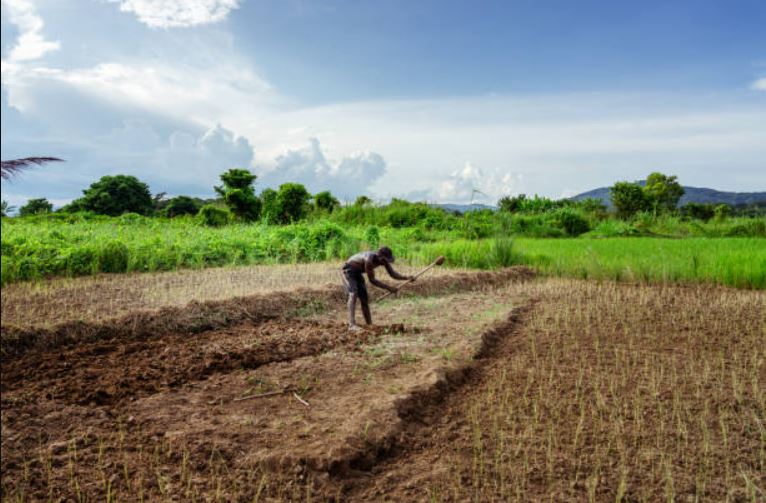Despite a strong economy, almost half (40.1%) of Nigerians struggle with poverty. This guide looks into the top ten states facing the toughest challenges, using the 2022 Multidimensional Poverty Index released by the National Bureau of Statistics (NBS).
In this guide, you will learn about the factors causing poverty In each state, not just income, but also access to basics like healthcare and education.
READ ALSO: 10 States In Nigeria With The Highest Human Development Index (HDI)
Let’s get started.
What Are The 10 Poorest States In Nigeria In 2024?
Disclaimer: This guide uses data from the NBS 2022 Multidimensional Poverty Index Report. Poverty rates can change over time, so the information may not fully show the current situation.
Rank | State | Estimated Multidimensional Poverty Rate (%) |
|---|---|---|
1 | Sokoto | ~91 |
2 | Bayelsa | ~88.5 |
3 | Jigawa | ~84.3 |
4 | Gombe | ~86.2 |
5 | Plateau | ~84 |
6 | Kebbi | ~83.5 |
7 | Zamfara | ~82 |
8 | Ebonyi | ~81 |
9 | Adamawa | ~80 |
10 | Katsina | ~79 |
1. Sokoto: ~91%
Sokoto State, located in northwestern Nigeria, consistently ranks among the states with the highest poverty rates in the country.
The National Bureau of Statistics (NBS) estimates a Multidimensional Poverty Index (MPI) of around 91% for Sokoto (as of 2022 data), which means a major portion of the population faces hardships in essential areas like health, education, sanitation, and living standards.
However, different factors contribute to poverty in the state. One is its mostly rural character, with limited access to infrastructure and economic opportunities.
Many residents rely on rain agriculture, making them vulnerable to droughts and unpredictable weather habits. Educational attainment also remains low, which has limited job prospects and makes the poverty cycle. Despite these challenges, there are traces of hope.
The Nigerian government has implemented various initiatives in Sokoto, including social safety net programs and agricultural development projects. Also, numerous NGOs are working on the ground to improve healthcare access, education, and livelihood opportunities.
2. Bayelsa: ~88.5%
Bayelsa State also struggles with a high poverty rate estimated at around 88.5% according to the National Bureau of Statistics (NBS) Multidimensional Poverty Index.
Oil exploration and production have caused environmental degradation, impacting traditional livelihoods like fishing and farming. There’s also limited access to clean water and sanitation for the well-being of communities.
Additionally, unemployment is high, with a skills gap hindering opportunities in the oil sector and little diversification in the state’s economy. However, efforts are underway to address these challenges.
Skills development initiatives aim to help residents with the qualifications needed to participate in the oil industry or explore entrepreneurial opportunities.
READ ALSO: Where Is Olumo Rock Exactly Located?
3. Jigawa: ~84.3%
Jigawa State is one of the poorest states in Nigeria. National Bureau of Statistics (NBS) reports using the Multidimensional Poverty Index (around 2022) estimate Jigawa’s poverty rate at 84.3%.
You can tell that most population lacks necessities across different aspects of life, impacting health, education, and sanitation. Unlike one cause, poverty in Jigawa is a complex issue with several contributing factors.
Like Sokoto state, the state’s economic backbone is rain-fed agriculture. Little access to modern farming techniques and irrigation systems also restricts agricultural productivity and income generation.
Education, another factor, is a challenge, especially in rural areas. Low literacy rates create a self-make cycle of poverty, as limited educational opportunities limit access to better-paying jobs and upward social mobility.
However, the Jigawa state government has acknowledged the issue and implemented initiatives to improve the situation. These efforts focus on boosting agricultural production through improved techniques and infrastructure.
4. Gombe: ~86.2%
Gombe State is also one of the poorest states In Nigeria with an evaluated multidimensional poverty rate of 86.2%. While many factors contribute to poverty, Gombe’s geography plays a big role.
Unlike some regions where resources are scarce, Gombe’s struggle is partly due to its land itself. Gombe sits in a dry area of Nigeria, where it doesn’t rain much and the weather is often hot. This dry climate makes it difficult to grow crops.
Without enough rain, farmers struggle to produce enough food to feed their families and sell for income. This lack of rain keeps many people in poverty. On top of the dryness, Gombe’s location also makes things difficult.
The state is far away from major cities and trade routes. This distance makes it expensive to transport goods in and out of Gombe, which drives up prices for everyday items.
Additionally, businesses are less likely to invest in areas that are difficult to reach, limiting job opportunities for residents. Gombe’s tough terrain and remote location create a situation where it’s hard for people to escape poverty.
5. Plateau: ~84%
One of the neediest states In Nigeria is Plateau State. National Bureau of Statistics’ Multidimensional Poverty Index estimates place Plateau’s poverty rate at around 84%.
Plateau State has unfortunately been affected by violence and conflict over the years. This instability disrupts economic activity, damages infrastructure, and discourages investment.
When businesses are afraid to invest, there are fewer job opportunities. Also, conflict can displace people from their homes and farms, making it difficult for them to earn a living.
In addition to the cause of Plateau state poverty, a large portion of Plateau’s economy relies on rain for their agriculture. This makes the state vulnerable to droughts and erratic rainfall.
When crops fail due to lack of rain, it reduces income and pushes residents into poverty. Then again, Inadequate infrastructure development in Plateau also slows economic growth.
Poor roads and transportation networks make it difficult to transport goods to markets, raising transportation costs and limiting access to essential services.
READ ALSO: Who Was the First President of Nigeria
6. Kebbi: ~83.5%
One of the poorest states In Nigeria is Kebbi State with a multidimensional poverty rate of around 83.5%. Let’s think about It, Kebbi is a land of contrasts. The mighty Niger River weaves through its heart which is a potential source of immense wealth.
However, a large part of the state falls within the Sudan Savannah, represented by hot temperatures and seasonal flooding. This creates a challenging scenario. Seasonal flooding poses a constant threat to agricultural land and infrastructure.
These floods can destroy crops and displace families, disrupting livelihoods and pushing people into poverty. Despite the presence of the Niger River, irrigation systems haven’t reached their full potential across Kebbi.
This confines the ability to control water flow and ensure a steady supply for agriculture throughout the year. Without proper irrigation, farmers struggle to maximize crop products and secure a stable income. Kebbi’s situation highlights the challenges of making productive natural resources.
While the state has the Niger River, without proper infrastructure and flood management strategies, this very resource can become a source of vulnerability.
7. Zamfara: ~82%
Zamfara State, with a poverty rate looming around 82% according to 2022 data, faces ongoing insecurity challenges that have contributed heavily to the poverty rate.
Insecurity in Zamfara can take different forms, including cattle rustling, banditry, and kidnapping. This constant threat discourages people from traveling freely, restricting trade and access to markets.
Farmers may be afraid to work their fields for fear of attacks, leading to decreased agricultural production. Also, insecurity discourages investment.
Businesses are reluctant to invest in areas with a high risk of violence, limiting job creation and economic growth. Poverty can make some people more vulnerable to recruitment by criminal groups.
8. Ebonyi: ~81%
Ebonyi State, despite boasting fertile lands, struggles with high poverty rates (around 81%). A major contributing factor is limited infrastructure.
Imagine a farmer harvests a large crop of cassava, eager to sell it at the market. But the journey there becomes a nightmare. Potholed roads stretch for miles, jolting the truck and spoiling some of the harvest.
The trip takes hours, delaying sales and increasing transportation costs. This case is a harsh reality for many Ebonyi farmers. Poor roads, unreliable electricity, and inadequate irrigation systems create significant hurdles.
Without good roads, transporting crops to markets or processing facilities is expensive and time-consuming. This reduces profit margins and discourages farmers from expanding production.
Also, unreliable electricity hinders food preservation and processing. Do you know the heartbreak of a farmer harvesting a truckload of vegetables, only to have them spoil because there’s no power to run coolers?
Little irrigation also restricts agricultural productivity. During dry seasons, farmers may not have enough water to provide healthy crop growth, leading to lower yields and income.
This lack of basic infrastructure creates a brutal cycle. Low income makes it difficult for the government to invest in better roads and irrigation systems. Limited infrastructure, in turn, restricts economic growth, trapping many residents in poverty.
READ ALSO: Politicians Who Have Been Senate Presidents in Nigeria Till Date
9. Adamawa: ~80%
Despite its rich potential, Adamawa State faces a poverty rate estimated at 80%, and part of the contributing factor is its limited economic variety.
Let’s think about a town where everyone depends on farming for their livelihood. If a disease attacks a particular crop, or there’s a bad harvest, the entire community suffers.
This lack of diversification makes Adamawa’s economy weak to external shocks. A decline in crop prices, for instance, can seriously impact the income of a large portion of the population.
Again, limited job opportunities outside of agriculture restrict income sources and delay overall economic growth. With a focus on just one sector, investors can be hesitant to put their money into Adamawa’s economy, fearing a lack of stability.
This, in turn, restricts access to resources and funding needed to develop other sectors like tourism or manufacturing. To break this cycle, Adamawa needs to invest in a variety of economies.
This could involve encouraging the growth of small businesses, promoting tourism in its beautiful natural areas, or exploring the potential for industries that complement agriculture, like food processing.
10. Katsina: ~79%
Katsina State is also struggling with poverty despite having hardworking residents. According to the study, one key reason is that there’s limited access to education and skill development opportunities In the state.
Imagine a young person who wants a good job but hasn’t learned the skills employers are looking for. This lack of training makes it difficult to compete for higher-paying jobs.
Many residents in Katsina rely on traditional forms of agriculture or small-scale businesses passed down through generations. While valuable, these skills might not be enough in today’s job market.
New technologies and business practices are constantly emerging, and without the chance to learn them, it can be tough to find well-paying work. In short, an absence of educational and training opportunities creates a poverty cycle.
However, breaking this cycle requires investment in education and skill development programs. This could involve providing scholarships, establishing vocational training centers, or offering courses in new technologies relevant to the job market.
READ ALSO: The History of Military Rule in Nigeria
Reference Sources:

